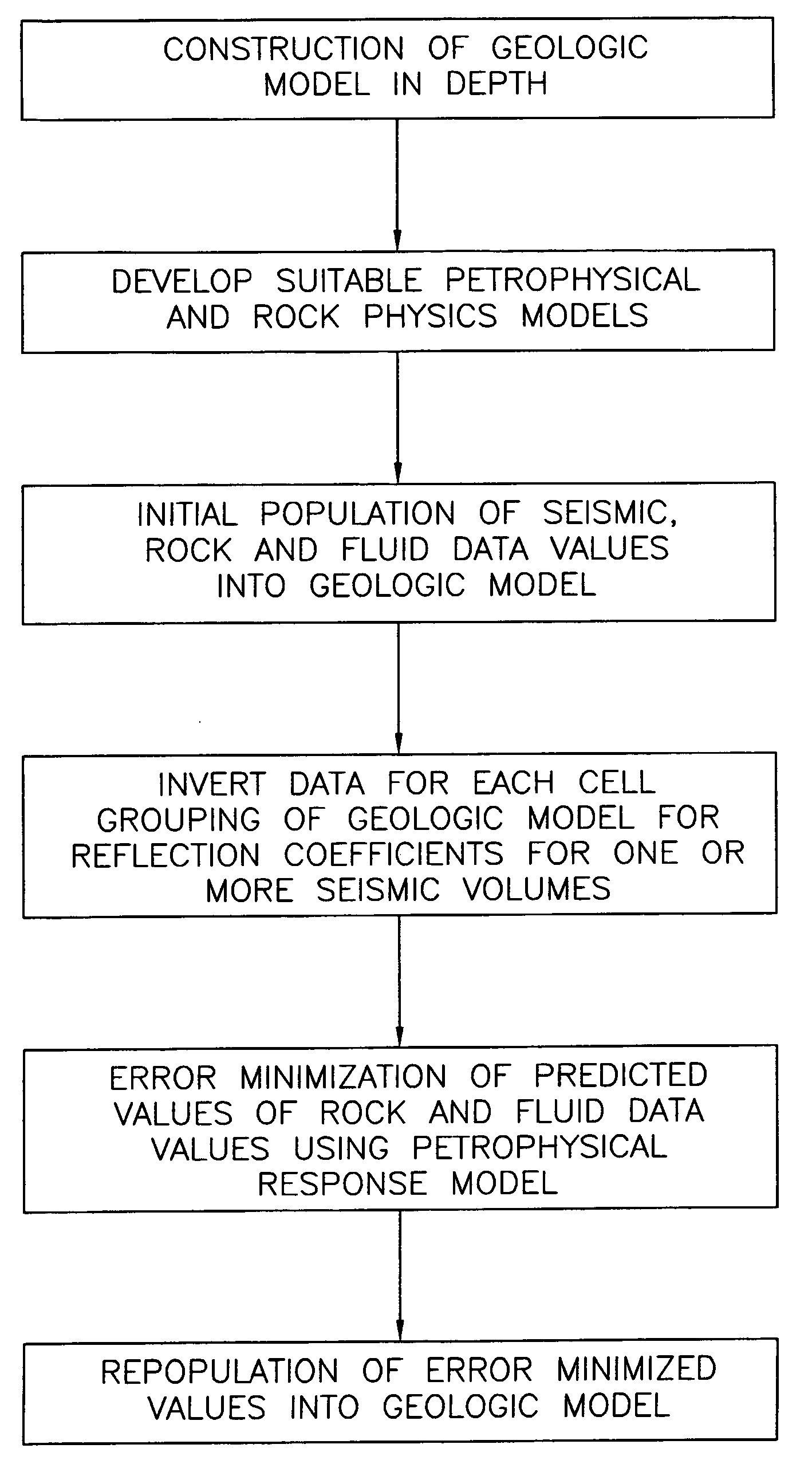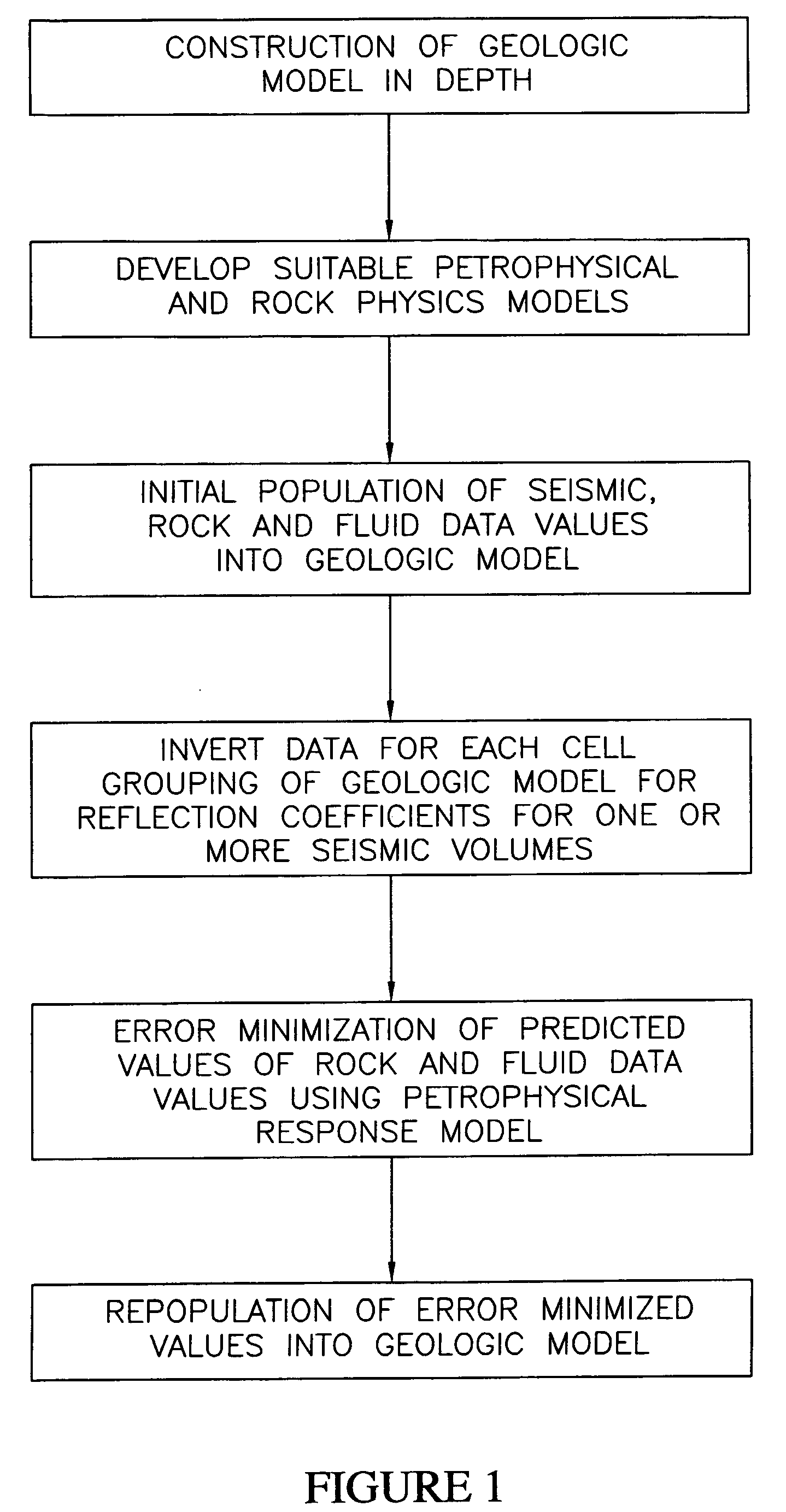Method for predicting quantitative values of a rock or fluid property in a reservoir using seismic data
- Summary
- Abstract
- Description
- Claims
- Application Information
AI Technical Summary
Benefits of technology
Problems solved by technology
Method used
Image
Examples
example
[0062] True seismic traces from near, mid and far partial seismic data stacks are illustrated as 70 in FIGS. 8A, 8B and 8C. In accordance with the process of the present invention, before and after the application of the process of the present invention, a first predicted value of porosity 82 (FIG. 8D) is assigned to a volume of a multi-dimensional, multi-scale gOcad™ model. A first predicted value of seismic response for the model volume is calculated from the porosity value. A synthetic trace 72 is generated and iteratively compared to the corresponding actual trace 70 illustrated in FIGS. 8A, 8B and 8C to determine a difference while consistency is maintained between the types, scales and dimensions of values and data. The first predicted value of porosity 82 is adjusted in response to this difference and the process of calculating a seismic response, generating a trace and comparing the generated trace to the actual trace is iteratively repeated until a match within a predetermi...
PUM
 Login to View More
Login to View More Abstract
Description
Claims
Application Information
 Login to View More
Login to View More - R&D
- Intellectual Property
- Life Sciences
- Materials
- Tech Scout
- Unparalleled Data Quality
- Higher Quality Content
- 60% Fewer Hallucinations
Browse by: Latest US Patents, China's latest patents, Technical Efficacy Thesaurus, Application Domain, Technology Topic, Popular Technical Reports.
© 2025 PatSnap. All rights reserved.Legal|Privacy policy|Modern Slavery Act Transparency Statement|Sitemap|About US| Contact US: help@patsnap.com



